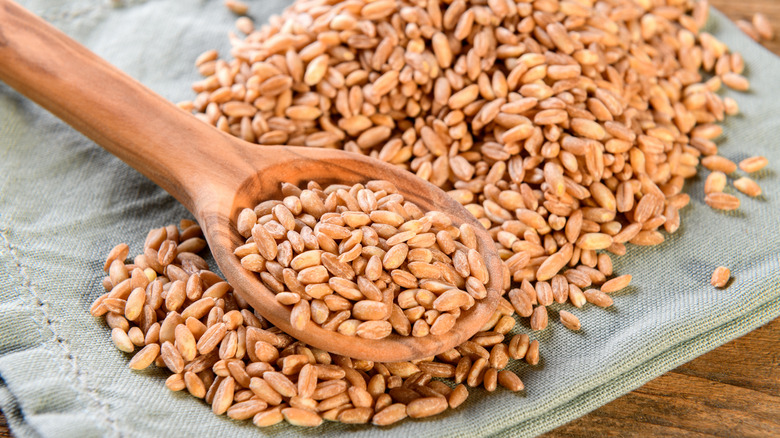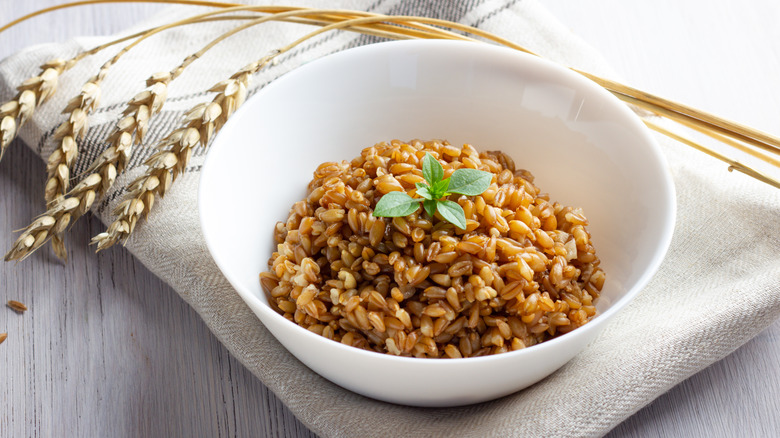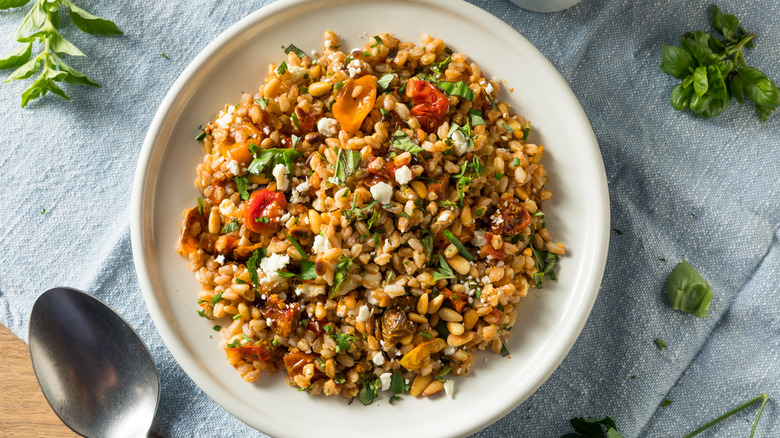What Is Farro And What Does It Taste Like?
Farro is a grain that 's been getting a lot of attention in recent years, along with barley, bulgur, quinoa, and millet. These are considered ancient grains, or whole grains that have remained unaltered and unprocessed for centuries. In much of the world, particularly in the Middle East and the Mediterranean regions, farro has always been an important diet staple. And in the United States, an increased interest in whole grains and nutrition has brought farro to the spotlight.
Farro has an oblong shape that looks similar to barley, but farro is a bit larger. When cooked, farro has a nutty flavor and a toothsome, chewy texture. Toasting the grain over dry heat before it's cooked will bring out even more of the nuttiness. The Oldways Whole Grain Council defines ancient grains as having been untouched for several centuries; it's believed that farro dates back thousands of years as it has been discovered in ancient Egyptian tombs.
Farro is an excellent base ingredient for grain bowls and is a great addition to side dishes, salads, and soups. Its neutral yet nutty flavor makes it suitable for using in savory or sweet recipes.
Varieties of farro and nutrition
Even though farro is generally referred to as a single grain, there are a few different types; it all has to do with the grain's size. Einkorn is little farro, emmer is the medium-sized farro, and spelt is the largest.
In addition, farro is available whole, semi-pearled, and pearled. Whole farro is the entire, untouched grain; the bran hasn't been removed. In semi-pearled farro, some of the bran has been removed, while pearled farro contains no bran at all. The difference between these three lies in their nutritional value and their cook times. Whole farro will take the longest to cook fully, while pearled farro will be done in a fraction of the time.
Because whole farro remains complete with the entire bran intact, it offers the most nutritional value. But even pearled farro is packed with nutrition. Farro is a great source of plant-based protein, fiber, antioxidants, iron, zinc, and magnesium.
Farro is versatile and simple to prepare
In America, most of the farro you'll find is the medium-sized variety, emmer. Most likely, it will be pearled, with the entire bran removed from the grain. It's similar to rice in preparation, meaning you simply cook it in simmering water on the stove until it's tender, or cook it in a rice cooker. For the stovetop method, the water-to-farro ratio is about two and a half to three cups of water for every cup of farro. If you're using whole farro, expect the cook time to be much longer (you can shorten this by soaking the farro overnight in water). When in doubt, simply follow the instructions on the package.
Farro can be enjoyed warm, cold, or at room temperature. You can treat it like oatmeal or porridge in the morning by preparing it and mixing it with milk, syrup or honey, fresh or dried fruit, and toasted nuts. Use cooked farro as a salad topper to add great chewy texture and a boost of nutrition, or turn it into a salad itself by combining it with vegetables, cheese, olive oil and vinegar, greens such as spicy arugula, and nuts.
If you can't find farro, barley makes a great substitute as it's similar in flavor, texture, and even preparation. As another ancient, whole grain, it's also an excellent source of nutritional benefits.



